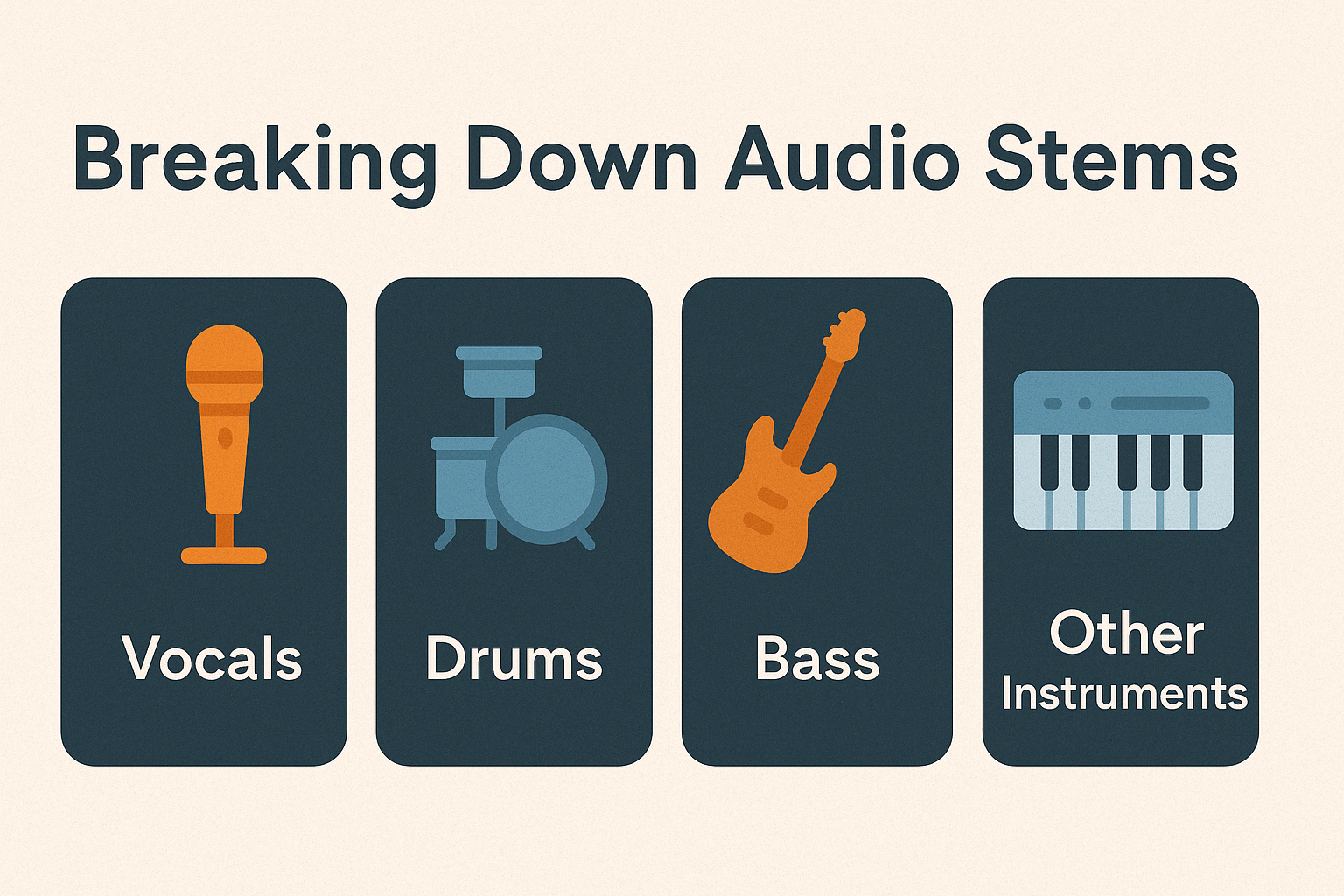If you’ve ever played around with music production, DJing, or vocal removers, you’ve probably come across the term "stems" — but what exactly are audio stems, and why do they matter?
In this article, we’ll break it down in simple terms so you can understand how stems work, how they’re used, and why they’ve become such a big deal in modern music.
What Are Audio Stems?
In the simplest terms, audio stems are isolated parts of a full song — like the vocals, drums, bass, or melody — saved as separate audio files.
Instead of one mixed-down file (like an MP3 or WAV), you get multiple tracks, each representing a different element of the music. These can then be edited, remixed, or processed individually.
Here’s a common stem breakdown:
- 🎤 Vocals – Lead and backing vocals
- 🥁 Drums – All percussion elements
- 🎸 Bass – The low-end bass line
- 🎹 Other Instruments – Guitars, synths, keys, effects, etc.
This format is often called a "4-stem mix", but sometimes you’ll see more detailed breakdowns depending on how complex the track is.
How Are Stems Different from Tracks?
Good question! In music production:

- A track usually refers to one instrument or sound layer within a DAW (Digital Audio Workstation).
- A stem is a group of tracks mixed together — for example, all drums grouped into one stem.
So stems are kind of like pre-mixed, grouped audio layers you can still manipulate individually.
Why Are Audio Stems So Useful?
Stems give you flexibility and control that you just can’t get from a regular song file. Here's why they’re important:
1. Remixing Made Easy
Want to remix a song? With stems, you can mute the original vocals and drop in your own — or keep just the vocal and build a new beat underneath.
2. Live DJing & Mashups
DJs use stems to blend songs in creative ways, isolate vocals on the fly, or even mix just the drums of one song with the melody of another.
3. Better Mixing & Mastering
Audio engineers can adjust levels, apply effects, or fine-tune specific parts of a track (like turning up the vocals without affecting the rest).
4. Karaoke & Practice
With vocal removers, you can extract stems to get instrumentals for karaoke — or vocals for learning harmony and pitch.
5. Sampling & Creative Edits
Producers can grab only the parts they need to sample and rework them into something new.
How Do You Get Audio Stems?
Traditionally, stems were only available if you had access to the original project files (like in a studio session). But now, with AI tools like our Vocal Remover, you can extract stems from any song — even from YouTube or uploaded files.
Modern tools use machine learning to "understand" and split the audio into separate components with surprisingly good quality.
Conclusion
Audio stems are a game-changer in how we interact with music. Whether you're remixing, DJing, practicing vocals, or just having fun, stems give you the power to explore songs in entirely new ways.
Next time you upload a track into a vocal remover and see "4-stem" mode, you’ll know exactly what that means — and how to use it like a pro.


